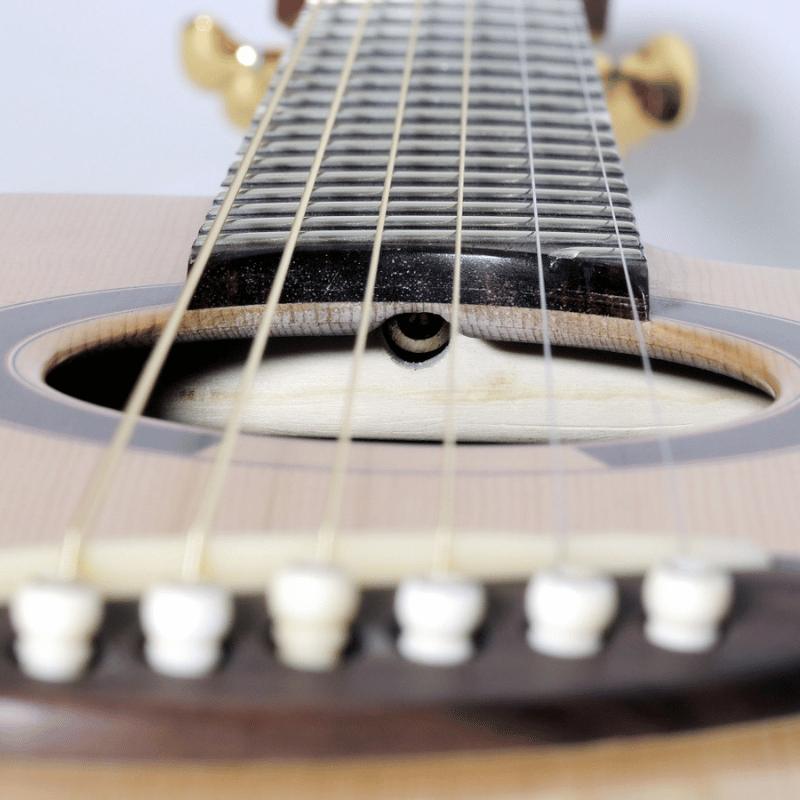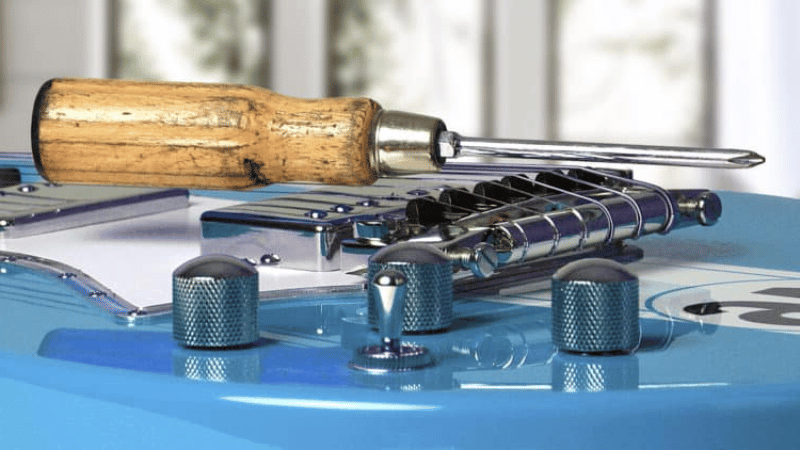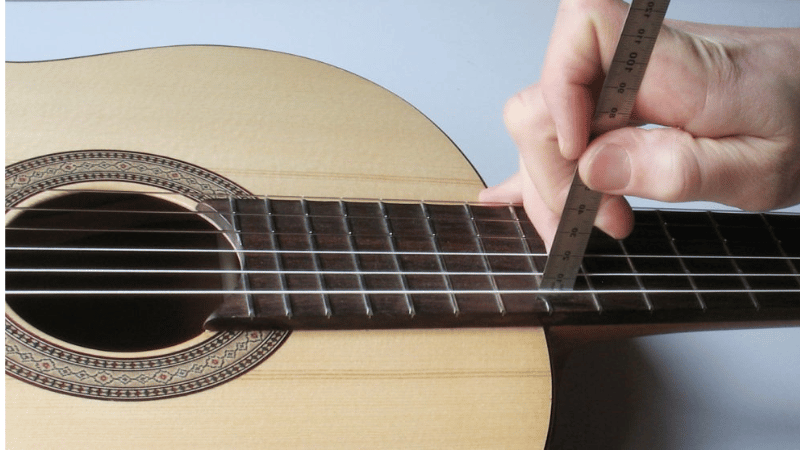Martin Dreadnought Junior for Fingerstyle Guitar: How It Compares to Other Acoustic Guitars
The Martin Dreadnought Junior, also known as the DJR, is a popular acoustic guitar that has gained recognition for its compact size and affordable price. In recent years, fingerstyle guitar has become increasingly popular in the world of acoustic music. In this article, we will discuss the features of the Martin DJR, its suitability for fingerstyle guitar, and provide tips for choosing an acoustic guitar for fingerstyle playing.
Martin DJR Features:
The Martin DJR features a compact dreadnought body shape, which makes it easy to hold and play. The top of the guitar is made of solid Sitka spruce, while the back and sides are made of sapele, a tonewood that is known for its balanced sound. The neck of the guitar is made of select hardwood and features a modified low oval shape with a high-performance taper, which makes it comfortable to play. The fingerboard is made of Richlite, a durable and sustainable material that is designed to mimic the feel of ebony. The bridge and saddle are made of compensated white Tusq, a synthetic material that is known for its excellent tone transfer.
Playing the Martin DJR for Fingerstyle Guitar:
The Martin DJR is known for its balanced tone and projection, which makes it a great choice for fingerstyle guitar playing. It offers a warm, rich sound that is suitable for a variety of musical genres. Compared to larger guitars, the Martin DJR has a more focused sound that is ideal for fingerstyle playing. While the smaller size of the DJR may take some getting used to for players accustomed to larger guitars, it is still capable of producing a full and resonant sound.
Reviews of the Martin DJR for Fingerstyle Guitar:
The Martin DJR has received positive reviews from industry experts and musicians alike. Many reviewers praise its balanced tone and comfortable playability, while others note that it offers great value for its price. Some reviewers have compared the DJR to larger Martin guitars, such as the D-28, and found that it holds its own in terms of sound quality.
Tips for Choosing an Acoustic Guitar for Fingerstyle Playing:
When choosing an acoustic guitar for fingerstyle playing, there are several factors to consider. The first is the size and shape of the guitar, as smaller guitars tend to be more suitable for fingerstyle playing. The tonewoods used in the construction of the guitar also play a significant role in its sound quality, with spruce and mahogany being popular choices. In terms of Martin guitars, the DJR is a great option for fingerstyle playing, but other models, such as the 000-15M or the OMJM, are also worth considering.
Conclusion:
The Martin DJR is an excellent choice for fingerstyle guitar playing, thanks to its compact size, balanced tone, and comfortable playability. It offers great value for its price and is suitable for a variety of musical genres. When choosing an acoustic guitar for fingerstyle playing, it's important to consider the size and shape of the guitar, as well as the tonewoods used in its construction. The Martin DJR is just one of many options available, and players should try out different models to find the one that best suits their playing style and preferences.
Features of the Martin DJR
The Martin Dreadnought Junior (DJR) is a compact and affordable acoustic guitar designed for players who want a high-quality instrument for fingerstyle playing. Here are some of its key features:
Body Size, Shape, and Tonewoods Used: The DJR features a compact dreadnought body shape that is easy to handle and comfortable to play. The top is made of solid Sitka spruce, while the back and sides are made of sapele, a tonewood that is similar in sound and appearance to mahogany. The use of solid tonewoods ensures that the guitar produces a warm and resonant sound.
Neck Shape, Scale Length, and Fingerboard Material: The DJR has a comfortable modified low oval neck shape that is easy to play. The scale length is 24", which is slightly shorter than the standard Martin dreadnought scale length of 25.4". The fingerboard is made of richlite, a composite material that is similar in feel and tone to ebony.
Bridge and Saddle Materials: The bridge and saddle are made of compensated tusq, a synthetic material that is known for its excellent tonal transfer and sustain. The bridge pins are made of plastic.
Hardware and Electronics, If Any: The DJR does not come with electronics, but it does feature chrome enclosed gear tuners that provide accurate and stable tuning. The guitar also comes with a soft gig bag for easy transport and storage.
Overall, the Martin DJR is a well-crafted guitar that offers a great playing experience at an affordable price point. Its compact size and solid tonewoods make it a great choice for fingerstyle players who want a guitar that is easy to handle and produces a warm and resonant sound.

Playing the Martin DJR for fingerstyle guitar
The Martin Dreadnought Junior (DJR) is a guitar that has gained popularity among fingerstyle guitarists. Fingerstyle guitar is a technique where the player plucks the strings of the guitar directly with their fingers, as opposed to using a pick. The DJR's smaller body size and unique tonewood selection make it an attractive option for fingerstyle guitarists.
The sound of the DJR is bright and balanced, with a focused midrange that allows the notes to stand out clearly. This makes it ideal for fingerstyle playing, as it allows each note to be heard clearly and distinctly. Additionally, the DJR's shorter scale length and smaller body size make it easier to play complex fingerstyle patterns and chord progressions.
When compared to other acoustic guitars for fingerstyle playing, the DJR holds its own. It has a clear and defined sound that is well-suited for fingerstyle playing, and its smaller body size and shorter scale length make it comfortable to play for extended periods of time. However, some fingerstyle players may prefer a guitar with a wider fingerboard or a more traditional tonewood selection.
One potential drawback of using the DJR for fingerstyle playing is its limited dynamic range. Due to its smaller body size, the DJR may not have the same volume and projection as larger dreadnought guitars. However, this can be addressed with proper amplification or by adjusting playing technique to produce a softer, more intimate sound.
Overall, the Martin DJR is a solid choice for fingerstyle guitarists. Its smaller body size, unique tonewood selection, and balanced sound make it a versatile instrument for a variety of playing styles.
Reviews of the Martin DJR for Fingerstyle Guitar
Industry experts and guitar enthusiasts alike have given the Martin DJR high praise for its fingerstyle capabilities. Guitar World described the DJR as a "small-bodied guitar with a big voice" and praised its "bright and crisp tone." The DJR has also been reviewed positively by Acoustic Guitar magazine, which called it a "well-balanced and well-voiced guitar" that "handles fingerstyle playing beautifully."
Musicians have also raved about the DJR's fingerstyle performance. Acclaimed fingerstyle guitarist Andy McKee is a big fan of the DJR, describing it as "a comfortable and easy-playing guitar with a big, open sound." Singer-songwriter Vance Joy has also been spotted playing the DJR on stage, noting that its "bright tone" and "playability" make it a great choice for fingerstyle playing.
One reviewer on Sweetwater praised the DJR for its "excellent projection" and "balanced sound," noting that it was "perfect for fingerstyle playing." Another reviewer on Musician's Friend described the DJR as a "fantastic little guitar" that was "great for fingerstyle players."
Overall, the reviews of the Martin DJR for fingerstyle guitar have been overwhelmingly positive, with many musicians and experts praising its balance, projection, and tone for this particular playing style.

Tips for choosing an acoustic guitar for fingerstyle playing
When it comes to choosing an acoustic guitar for fingerstyle playing, there are several factors to consider. Here are some tips to help you make the best choice for your playing style and preferences:
-
Body size and shape: Fingerstyle playing typically requires a guitar with a smaller body size and shape than a dreadnought or jumbo guitar. The Martin Dreadnought Junior (DJR) is a great option for fingerstyle playing, as its smaller size and shape make it easy to play and comfortable to hold.
-
Tonewoods: The type of tonewoods used in the guitar can have a significant impact on its sound quality. The Martin DJR features a solid Sitka spruce top and sapele back and sides, which provide a warm, balanced tone with good projection.
-
Neck shape and scale length: The neck shape and scale length of the guitar can affect how easy it is to play complex fingerstyle patterns. The Martin DJR has a slim taper neck shape and a shorter 24-inch scale length, which make it easy to fret chords and play intricate fingerstyle patterns.
-
Fingerboard material: The fingerboard material can affect the feel and playability of the guitar. The Martin DJR features a Richlite fingerboard, which has a smooth feel and is highly resistant to wear and tear.
-
Comparison to other Martin models: If you're considering a Martin guitar for fingerstyle playing, it's worth comparing the DJR to other models like the 000-15M or the OM-21. Both of these models are also great for fingerstyle playing and feature similar tonewoods and neck shapes.
-
Other brands and models: While Martin guitars are known for their quality and sound, there are plenty of other brands and models that are great for fingerstyle playing. Some popular options include the Taylor 814ce, the Gibson J-45, and the Yamaha FG800.
Ultimately, the best way to choose an acoustic guitar for fingerstyle playing is to play as many different models as possible and see which one feels and sounds the best to you. Don't be afraid to ask for recommendations from other musicians and music store staff, and take your time to find the perfect guitar for your playing style and preferences.
Conclusion
The Martin Dreadnought Junior (DJR) is a guitar that is well-suited for fingerstyle playing, as its small size and unique tonewood selection create a warm and intimate sound. When it comes to choosing an acoustic guitar for fingerstyle playing, there are several factors to consider, including size, tonewood selection, and playability.
One of the most important factors to consider when choosing an acoustic guitar for fingerstyle playing is the guitar's size and shape. The Martin DJR has a smaller body than many other acoustic guitars, which makes it easier to hold and play for extended periods of time. The guitar's dreadnought shape also provides a balanced tone and plenty of volume, which is important for fingerstyle playing.
Another important factor to consider when choosing an acoustic guitar for fingerstyle playing is the guitar's tonewood selection. The Martin DJR features a solid Sitka spruce top and sapele back and sides, which provide a warm and balanced tone with excellent projection. The guitar's fingerboard and bridge are made from Richlite, a synthetic material that is known for its durability and sustain.
When comparing the Martin DJR to other acoustic guitars for fingerstyle playing, many musicians note that the guitar's unique tonewood selection and smaller size create a more intimate and personal sound. The guitar's balanced tone and projection also make it suitable for a wide range of musical styles, from folk to blues to jazz.

Reviews of the Martin DJR for fingerstyle playing are generally positive, with many musicians praising the guitar's comfortable neck shape and smooth playability. Industry experts also note that the guitar's unique tonewood selection and smaller size make it an excellent choice for fingerstyle playing.
When considering other acoustic guitars for fingerstyle playing, it is important to compare each guitar's size, tonewood selection, and playability. Other Martin models that are popular for fingerstyle playing include the Martin D-28 and the Martin 000-18. Other brands that are known for producing high-quality acoustic guitars for fingerstyle playing include Taylor, Gibson, and Guild.
Overall, the Martin DJR is an excellent choice for fingerstyle playing, thanks to its unique tonewood selection, comfortable neck shape, and balanced tone. Whether you are a beginner or an experienced musician, the Martin DJR is a guitar that is sure to inspire you to play your best.